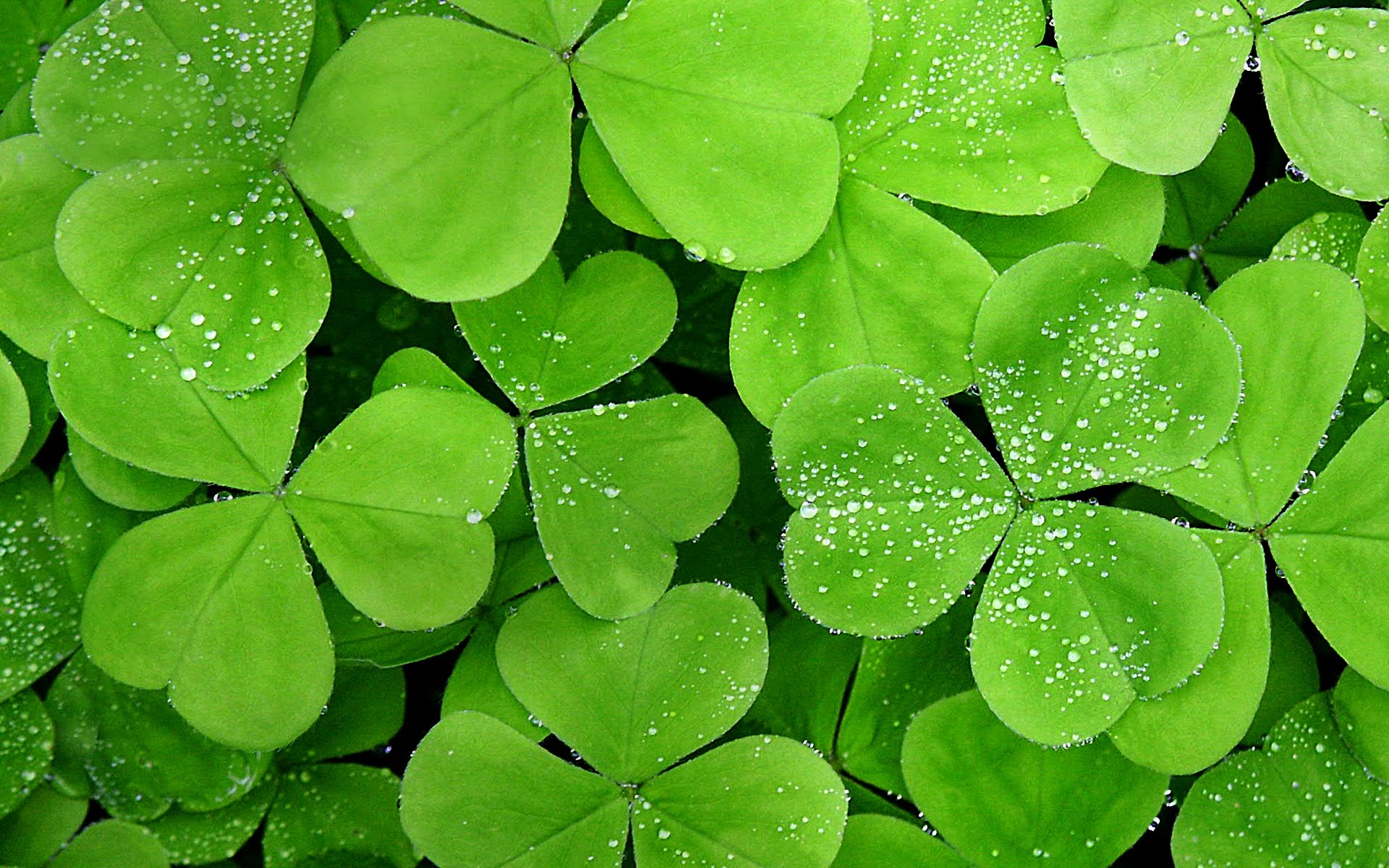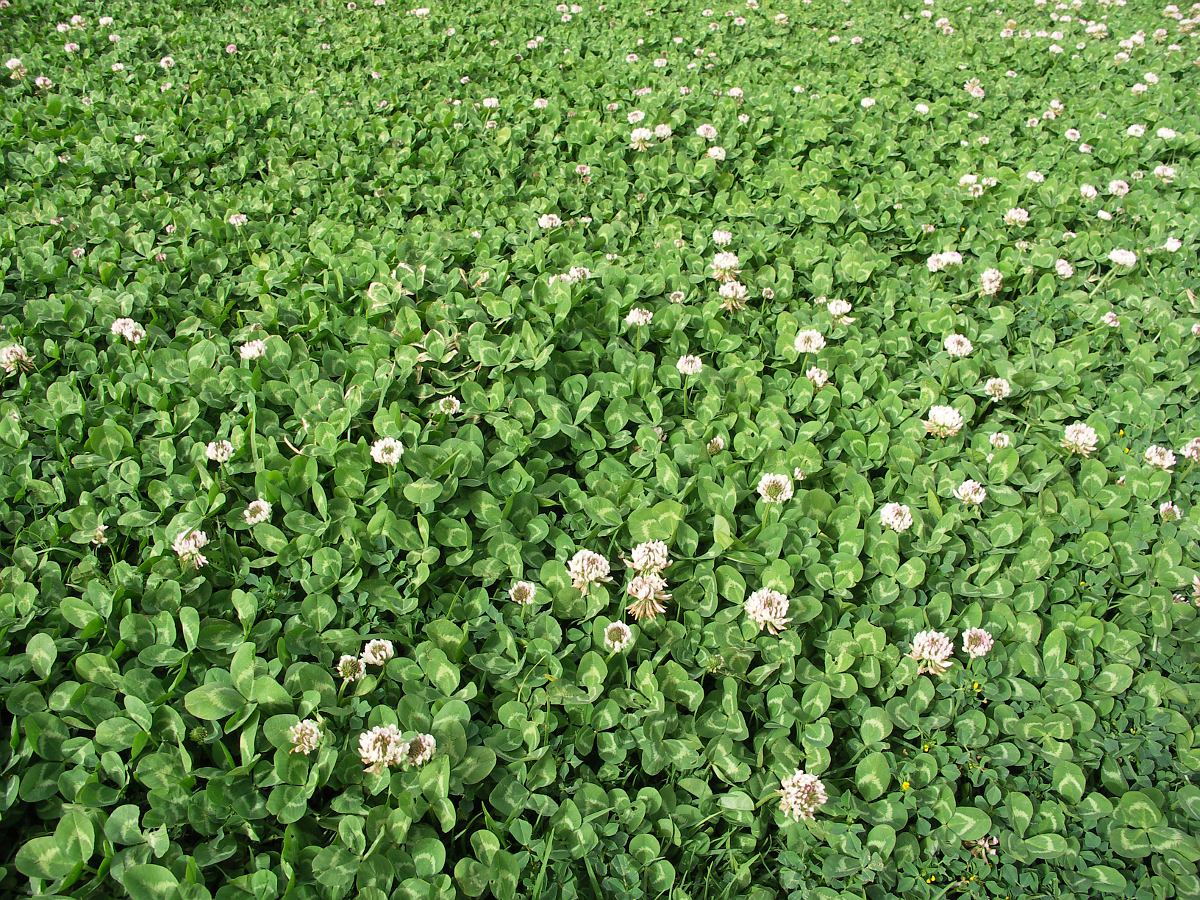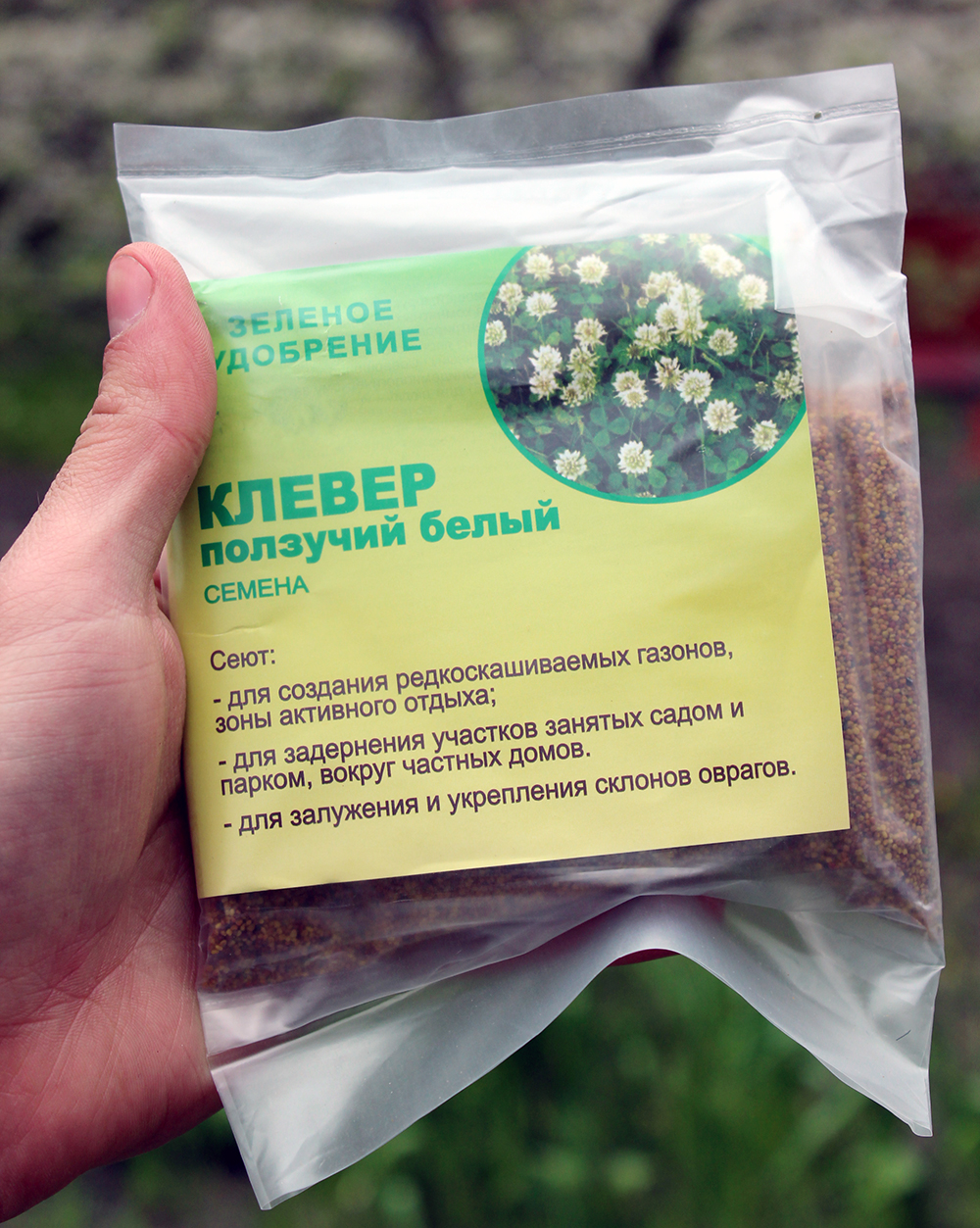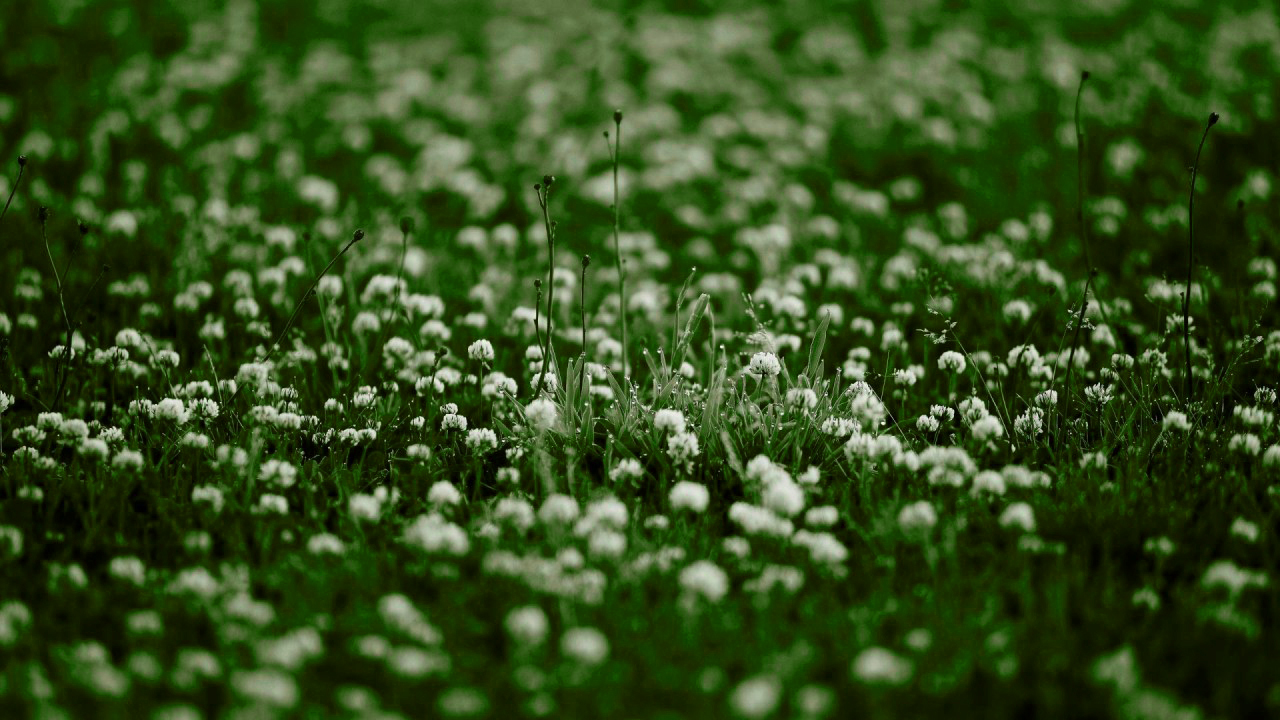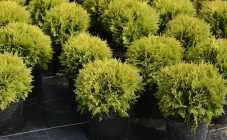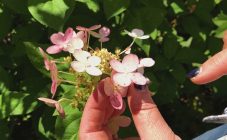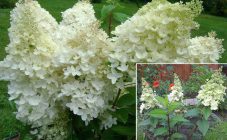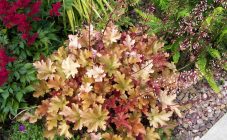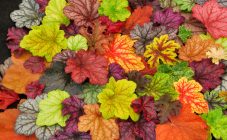Content:
Clover is one of the most versatile plants. In agriculture, it is grown for animal feed. Beekeepers set up apiaries near the clover fields. The honey from the pollen of this culture is especially valuable. The meadow plant is an excellent green manure, its root system accumulates nitrogen and other useful substances in the soil.
Finally, in the garden or in the summer cottage, you can sow all the free space between the trees with clover. After all, it gives a soft and dense coating, pleasant to the touch.
Brief description of culture
Clover grows in Russia in all regions. The meadow plant loves moist soil and does not tolerate dry summers. Therefore, in the southern regions of the country, it is found in the wild less often than in the middle lane. Clover grows well even in the Perm region and regions with similar climatic conditions.
Clover is familiar to everyone, without exception. His leaf is assembled from three separate leaves, collected at one point. The flowers of the plant can be painted white, all shades of pink, lilac and crimson flowers.
Clover flowers and leaves have been used by folk medicine for the manufacture of medicinal drugs for many centuries.
The best decorative varieties of clover for the lawn
More than three hundred varieties of this plant are known. Gardeners and landscape designers are more likely to plant white clover for their lawn than other varieties. A perennial clover lawn can tolerate:
- nighttime temperature drops;
- trampling;
- mowing.
Low-growing white lawn clover in combination with pink field clover looks good. These varieties are often found in nature, they can be found in the Caucasus and Crimea. Both crops tolerate frost and trampling well. They have the usual three-leafed structure and ovoid flowers.
In addition to the most famous meadow pink and white, red meadow clover is suitable for lawns.
There are several more varieties of this crop suitable for organizing a garden lawn:
- Barbian. Resistant to freezing, suitable for organizing a functional lawn. After mowing, it quickly overgrows with new shoots and foliage.
- Liflex. Decorative clover, it blooms earlier than other varieties. Suitable for growing as part of a decorative flower arrangement on alpine hills, flower beds and sowing a lawn.
- Nanook. Decorative grade. Clover Nanook is used to decorate the landscape and organize functional lawns.
- Pipolin. Microclover with small leaves and twigs. The undersized clover is suitable for sowing lawns.
- Pirouette. Mini clover was developed for decorating lawns and flower beds. Medium flowering variety. Undersized clover for lawns and decorative flower beds.
- Rivendel. Back-flowering variety. A plant with many inflorescences.
- Sylvester. Medium flowering plant, tolerates frosty winters well. Creates a stable lawn surface.
Planting seeds
Sowing lawn grass is best done in early spring.
There are several ways to spring sowing:
- On the ice crust. The seeds are sown with the beginning of the thaw directly on the snow-covered field.In the afternoon, when the sun warms up, the ice shell will melt and the seeds will fall down with the water.
- The grass is sown in April in the usual way along the prepared grooves. Seeds are buried in the ground to a depth of no more than 1.5 cm. Immediately after sowing, the area is watered abundantly.
- The seeds are mixed with sand and scattered over the surface of the soil. Light handfuls of sand scattered over the site indicate where the seeds have already fallen and where they are not.
In fact, the autumn sowing would be more correctly called late summer. The plant is sown in late August - early September. It is necessary that the grass cover has time to ascend and properly take root on the site.
You can sow lawn clover just before winter. But you will have to choose a time so that the seeds do not have time to swell and rise. They must overwinter in the soil. In spring, the shoots will hatch with the first warming.
The retail network offers consumers a sloth lawn with white clover. Convenient packaging of seeds with instructions for use will simplify the task of choosing the right variety for a novice gardener.
The site before sowing the lawn grass is treated with herbicides. This method of pre-processing will further reduce the amount of labor spent on weeding the lawn.
Grass care after planting
Clover is a lawn grass that multiplies easily and quickly. Once planted on the site, this perennial herb no longer needs to be sown and transplanted. In nature, clover spreads itself by self-seeding and by rooting of aerial branches.
In the first year after sowing, the clover lawn does not look very decorative. Weeds spoil its appearance. You will have to destroy them selectively using Roundup. In order not to damage cultivated plants, the chemical is applied to the leaves of the weeds with a brush.
Where it is impossible to destroy a weed plant using chemicals, manual weeding is used.
Clover crops need to be watered regularly. This crop does not tolerate drought well. There is no need to mow the lawn in the first year, the root system of the grass cover has not yet grown enough to give too much above-ground green mass.
After the emergence of friendly shoots, you can apply drugs:
- lemur,
- basagran,
- agritox,
- agristar.
All of these products are suitable for use as a first complementary food.
They contain the right amount of substances for the starting growth of plants: nitrogen, phosphorus, zinc and calcium.
In the second year, when the grass mass grows sufficiently and begins to bloom, the lawn needs to be cut. After mowing, the lawn does not look very attractive, but after 3-4 days the protruding stems are overgrown with foliage again.
The frequency of mowing depends on the purpose of the lawn. If it is intended for children's play, then it must be cut before the flowers appear. Decorative alpine slides and lawns are not mowed until brown faded inflorescences appear.
A heavily overgrown lawn is cut by hand or with a trimmer. The grass looks prettier after mowing with a lawnmower, but it is not suitable for cutting very long, tall branches and stems.
There are few disadvantages to clover lawn cover, they include:
- ugly appearance after mowing;
- a large number of bees arriving at flowering honey plants;
- the attractiveness of clover beds for slugs and snails.
The advantages of a clover lawn are:
- the surface of the coating is soft and pleasant for bare feet;
- the possibility of long-term use;
- self-seeding of grass - it does not need to be planted annually;
- attractive appearance;
- quick recovery of deciduous mass after mowing.
More often than other types, microclover is chosen for the lawn. It is easier to care for it and the appearance of the area covered with such a variety always pleases the owners.
Diseases and pests
Clover, like other crops, can be affected by harmful insects and diseases.
Harm to clover crops:
- Clover weevils - These bugs are found in all regions where clover grows. Pests eat away the stems and generation organs. They bury themselves in the ground for the winter. The weevil lays eggs in buds and buds. The beetle pupates in a receptacle.
- Locusts. Orthoptera detachment. Some species can reach 9 cm in length. The locust lays eggs in the ground, covering them with a film that forms a capsule. The greatest harm to crops is from herd raids by locusts.
- Alfalfa bug. The larva of the pest can be colored yellowish green or bright green. The pest lays its eggs in plant stems. In spring, the larvae turn into adults, which feed on the juices of shoots, unopened buds and peduncles. The plant turns yellow and dies.
- Clover plantings are adored by slugs and snails. In summer and spring, they are almost invisible, but closer to autumn, pests gather under the leaves of garden clover in huge quantities.
The methods of control in all cases are the same; plant pests are destroyed by processing seed material and crops with protective chemicals. Agronomists recommend mowing infected clovers before flowering. The hay is harvested and burned.
Clover lawns and lawns should be regularly treated with drugs that protect plants from infectious plant diseases:
- Powdery mildew. The disease can be recognized by the appearance of a gray-white bloom on the leaves of plants. The affected leaves turn yellow, crumble, after which the entire clover bush dries up and dies. The causative agent of the disease is a fungus that spreads from a sick plant to a healthy plant by the wind. Balls - cleistocarps containing ripening fungal spores are able to survive the winter in plant debris.
- Flower mold. It develops on the flowers of the plant. Outwardly, flowering in a sick clover bush is no different from a healthy one. Only under strong magnification can one see that the pistil and stamens are covered with a grayish bloom. The fungus settles in the seeds. Seed material from diseased plants is smaller than that of normal plants. Stunted bushes grow from the seed affected by the fungus.
There are a lot of drugs in the trade network, the action of which is directed against infection and pests. The choice of remedy depends on the area of the lawn and the diseases that clover in the region are most susceptible to.
In general, experienced gardeners find that it is not difficult to grow and maintain a clover lawn. Even beginners can cope with this matter.
